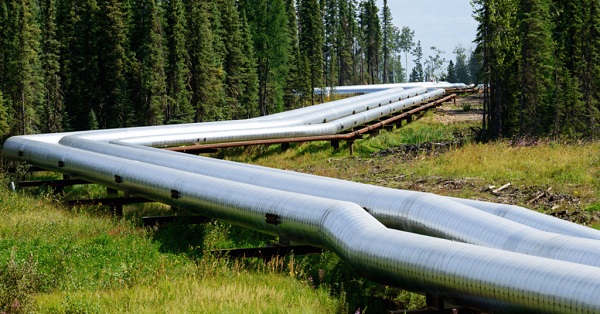Alberta
Calgary Ring Road opens 10 months early

Christmas comes early for Calgary drivers
The Calgary Ring Road is now ready to be opened to public traffic, several months ahead of schedule.
Calgary’s ring road is one of the largest infrastructure undertakings in Calgary’s history and includes 197 new bridges and 48 interchanges. The 101-kilometre free-flowing Calgary Ring Road will open to traffic Dec. 19, completing a project decades in the making.
“Calgary’s ring road is a project that has been decades in the making and its completion is a real cause for celebration. This has been an important project and our government got it done. With this final section completed, travelling just got a little easier for families and for workers. This will not only benefit Calgarians and residents in the metro region, it will provide a boost to our economy, as goods can be transported more easily across our province.”
Although construction of the entire ring road project began in 1999 under former premier Ralph Klein, discussions on a ring road around the City of Calgary began as early as the 1950s. In the late 1970s, under former premier Peter Lougheed, high-level planning and land acquisition started and a transportation utility corridor was established to make the Calgary Ring Road a reality.
“The final section of the Calgary Ring Road is now complete, and I’d like to acknowledge the work done by former premiers and transportation ministers and their vision to build Alberta. I’m proud to announce that the final section was completed on budget and months ahead of schedule.”
“I’m thrilled to see the Calgary Ring Road project completed. It was something I have helped shepherd through the process since 2014. Finally, all the hard work put in by everyone has become a reality. The Calgary Ring Road will provide travellers with over 100 kilometres of free-flow travel, create new travel options for the City of Calgary and surrounding area and provide improved market access across the region.”
Opening the ring road means new travel options for Calgarians, which will draw traffic away from heavily travelled and congested roads such as the Deerfoot Trail, 16th Avenue, Glenmore Trail and Sarcee Trail. For commercial carriers, the ring road provides an efficient bypass route, saving time and money for the delivery and shipment of goods and services.
“The ring road investment generated thousands of local jobs and will now play an integral role in keeping Calgarians and the economy moving. This important transportation link will ease congestion on city routes and greatly improve connectivity and access for businesses transporting goods.”
The ring road is a critical component to growing economic corridors in Alberta and Western Canada, as it connects the Trans-Canada Highway to the east and west, and the Queen Elizabeth II Highway and Highway 2 to the north and south. It is also part of the CANAMEX corridor, which connects Alberta to the highway network in the United States and Mexico.
The completion of the ring road is a major boost for Calgary, opening new business opportunities and supporting key components of the Calgary economy. It sends a signal to businesses and investors that Calgary has a strong highway infrastructure, providing economic corridor connections through the entire region.
“With one of the smoothest commutes in Canada and the capacity to reach 16 million customers by road within a single day, Calgary offers unmatched quality of life and economic opportunities. The triumphant completion of the Calgary Ring Road further improves our capacity to attract even more companies, capital and talent to our city.”
“This is an exciting step forward for the Calgary Metropolitan Region. This key artery will not only improve the quality of life for the residents of the region, it is also a key economic enabler and we are thrilled to see its completion.”
Quick facts
- Stretched into a single lane, the highway is 1,304 kilometres long, the distance from Calgary to Winnipeg.
- Other sections opened in 2009, 2013, 2020 and 2023.
- The West Calgary Ring Road is the final piece of the ring road project.
Alberta
Premier Smith: Canadians support agreement between Alberta and Ottawa and the major economic opportunities it could unlock for the benefit of all

From Energy Now
By Premier Danielle Smith
Get the Latest Canadian Focused Energy News Delivered to You! It’s FREE: Quick Sign-Up Here
If Canada wants to lead global energy security efforts, build out sovereign AI infrastructure, increase funding to social programs and national defence and expand trade to new markets, we must unleash the full potential of our vast natural resources and embrace our role as a global energy superpower.
The Alberta-Ottawa Energy agreement is the first step in accomplishing all of these critical objectives.
Recent polling shows that a majority of Canadians are supportive of this agreement and the major economic opportunities it could unlock for the benefit of all Canadians.
As a nation we must embrace two important realities: First, global demand for oil is increasing and second, Canada needs to generate more revenue to address its fiscal challenges.
Nations around the world — including Korea, Japan, India, Taiwan and China in Asia as well as various European nations — continue to ask for Canadian energy. We are perfectly positioned to meet those needs and lead global energy security efforts.
Our heavy oil is not only abundant, it’s responsibly developed, geopolitically stable and backed by decades of proven supply.
If we want to pay down our debt, increase funding to social programs and meet our NATO defence spending commitments, then we need to generate more revenue. And the best way to do so is to leverage our vast natural resources.
At today’s prices, Alberta’s proven oil and gas reserves represent trillions in value.
It’s not just a number; it’s a generational opportunity for Alberta and Canada to secure prosperity and invest in the future of our communities. But to unlock the full potential of this resource, we need the infrastructure to match our ambition.
There is one nation-building project that stands above all others in its ability to deliver economic benefits to Canada — a new bitumen pipeline to Asian markets.
The energy agreement signed on Nov. 27 includes a clear path to the construction of a one-million-plus barrel-per-day bitumen pipeline, with Indigenous co-ownership, that can ensure our province and country are no longer dependent on just one customer to buy our most valuable resource.
Indigenous co-ownership also provide millions in revenue to communities along the route of the project to the northwest coast, contributing toward long-lasting prosperity for their people.
The agreement also recognizes that we can increase oil and gas production while reducing our emissions.
The removal of the oil and gas emissions cap will allow our energy producers to grow and thrive again and the suspension of the federal net-zero power regulations in Alberta will open to doors to major AI data-centre investment.
It also means that Alberta will be a world leader in the development and implementation of emissions-reduction infrastructure — particularly in carbon capture utilization and storage.
The agreement will see Alberta work together with our federal partners and the Pathways companies to commence and complete the world’s largest carbon capture, utilization and storage infrastructure project.
This would make Alberta heavy oil the lowest intensity barrel on the market and displace millions of barrels of heavier-emitting fuels around the globe.
We’re sending a clear message to investors across the world: Alberta and Canada are leaders, not just in oil and gas, but in the innovation and technologies that are cutting per barrel emissions even as we ramp up production.
Where we are going — and where we intend to go with more frequency — is east, west, north and south, across oceans and around the globe. We have the energy other countries need, and will continue to need, for decades to come.
However, this agreement is just the first step in this journey. There is much hard work ahead of us. Trust must be built and earned in this partnership as we move through the next steps of this process.
But it’s very encouraging that Prime Minister Mark Carney has made it clear he is willing to work with Alberta’s government to accomplish our shared goal of making Canada an energy superpower.
That is something we have not seen from a Canadian prime minister in more than a decade.
Together, in good faith, Alberta and Ottawa have taken the first step towards making Canada a global energy superpower for benefit of all Canadians.
Danielle Smith is the Premier of Alberta
Alberta
A Memorandum of Understanding that no Canadian can understand

From the Fraser Institute
The federal and Alberta governments recently released their much-anticipated Memorandum of Understanding (MOU) outlining what it will take to build a pipeline from Alberta, through British Columbia, to tidewater to get more of our oil to markets beyond the United States.
This was great news, according to most in the media: “Ottawa-Alberta deal clears hurdles for West Coast pipeline,” was the top headline on the Globe and Mail’s website, “Carney inks new energy deal with Alberta, paving way to new pipeline” according to the National Post.
And the reaction from the political class? Well, former federal environment minister Steven Guilbeault resigned from Prime Minister Carney’s cabinet, perhaps positively indicating that this agreement might actually produce a new pipeline. Jason Kenney, a former Alberta premier and Harper government cabinet minister, congratulated Prime Minister Carney and Premier Smith on an “historic agreement.” Even Alberta NDP Leader Naheed Nenshi called the MOU “a positive step for our energy future.”
Finally, as Prime Minister Carney promised, Canada might build critical infrastructure “at a speed and scale not seen in generations.”
Given this seemingly great news, I eagerly read the six-page Memorandum of Understanding. Then I read it again and again. Each time, my enthusiasm and understanding diminished rapidly. By the fourth reading, the only objective conclusion I could reach was not that a pipeline would finally be built, but rather that only governments could write an MOU that no Canadian could understand.
The MOU is utterly incoherent. Go ahead, read it for yourself online. It’s only six pages. Here are a few examples.
The agreement states that, “Canada and Alberta agree that the approval, commencement and continued construction of the bitumen pipeline is a prerequisite to the Pathways project.” Then on the next line, “Canada and Alberta agree that the Pathways Project is also a prerequisite to the approval, commencement and continued construction of the bitumen pipeline.”
Two things, of course, cannot logically be prerequisites for each other.
But worry not, under the MOU, Alberta and Ottawa will appoint an “Implementation Committee” to deliver “outcomes” (this is from a federal government that just created the “Major Project Office” to get major projects approved and constructed) including “Determining the means by which Alberta can submit its pipeline application to the Major Projects Office on or before July 1, 2026.”
What does “Determining the means” even mean?
What’s worse is that under the MOU, the application for this pipeline project must be “ready to submit to the Major Projects Office on or before July 1, 2026.” Then it could be another two years (or until 2028) before Ottawa approves the pipeline project. But the MOU states the Pathways Project is to be built in stages, starting in 2027. And that takes us back to the circular reasoning of the prerequisites noted above.
Other conditions needed to move forward include:
The private sector must construct and finance the pipeline. Serious question: which private-sector firm would take this risk? And does the Alberta government plan to indemnify the company against these risks?
Indigenous Peoples must co-own the pipeline project.
Alberta must collaborate with B.C. to ensure British Columbians get a cut or “share substantial economic and financial benefits of the proposed pipeline” in MOU speak.
None of this, of course, addresses the major issue in our country—that is, investors lack clarity on timelines and certainty about project approvals. The Carney government established the Major Project Office to fast-track project approvals and provide greater certainty. Of the 11 project “winners” the federal government has already picked, most either already had approvals or are already at an advanced stage in the process. And one of the most important nation-building projects—a pipeline to get our oil to tidewater—hasn’t even been referred to the Major Project Office.
What message does all this send to the investment community? Have we made it easier to get projects approved? No. Have we made things clearer? No. Business investment in Canada has fallen off a cliff and is down 25 per cent per worker since 2014. We’ve seen a massive outflow of capital from the country, more than $388 billion since 2014.
To change this, Canada needs clear rules and certain timelines for project approvals. Not an opaque Memorandum of Understanding.
-

 Business2 days ago
Business2 days agoWhy Does Canada “Lead” the World in Funding Racist Indoctrination?
-

 Business1 day ago
Business1 day agoLoblaws Owes Canadians Up to $500 Million in “Secret” Bread Cash
-

 Dan McTeague1 day ago
Dan McTeague1 day agoWill this deal actually build a pipeline in Canada?
-

 Media2 days ago
Media2 days agoThey know they are lying, we know they are lying and they know we know but the lies continue
-

 Censorship Industrial Complex1 day ago
Censorship Industrial Complex1 day agoUS Condemns EU Censorship Pressure, Defends X
-

 Economy9 hours ago
Economy9 hours agoAffordable housing out of reach everywhere in Canada
-

 Focal Points2 days ago
Focal Points2 days agoThe West Needs Bogeymen (Especially Russia)
-

 Banks1 day ago
Banks1 day agoTo increase competition in Canadian banking, mandate and mindset of bank regulators must change





